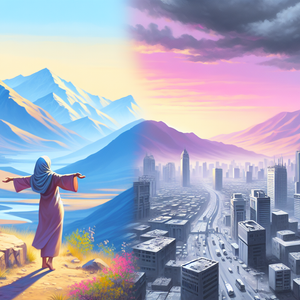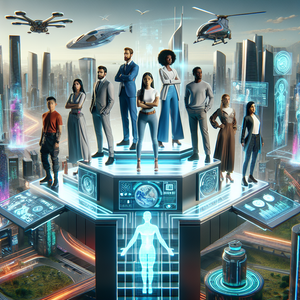The Art of Imagining Futures: Preparing for Radical Shifts by 2030 and Beyond

Traditional scenario planning has historically relied on data-driven models, trends analysis, and probabilistic forecasting to anticipate risks and opportunities. While effective in many ways, this approach often prioritizes logic over imagination, constraining innovation by anchoring future visions to what is already known. The art of imagining futures represents a paradigm shift, reframing uncertainty as a creative canvas filled with possibilities. By asking 'What if?' rather than 'What will happen?', leaders can challenge assumptions, explore radical ideas, and envision futures not bound by the constraints of the present.
Leveraging Storytelling to Navigate Complexity
Storytelling is a fundamental tool for imagining futures, enabling leaders and stakeholders to explore how large-scale forces might impact individuals, communities, and industries. For instance, a global energy company could use storytelling to envision scenarios like a renewable energy-dominated world or a fragmented energy market. Storytelling makes futures relatable and engaging, bridging the gap between abstract concepts and human experiences to inspire action and foster urgency.
Speculative Design: Experiencing the Future Today
Speculative design involves creating tangible artifacts—such as prototypes or immersive environments—that represent potential futures. This approach allows stakeholders to experience abstract ideas more concretely. Examples include sustainable packaging prototypes or urban concepts like floating neighborhoods and vertical farming. Speculative design sparks conversations and generates actionable insights by engaging multiple senses.
Collaborative Workshops: Expanding the Boundaries of Imagination
Collaborative workshops bring together diverse stakeholders to generate inclusive visions of the future. Techniques like role-playing and visual storytelling push participants into new ways of thinking. For example, a 'Future of Work' workshop used personas to explore workforce disruptions, leading to insights that informed a technology company’s strategy on upskilling and digital inclusion.
The Role of Leadership in Envisioning Futures
Bold and visionary leadership is essential for imagining futures. Leaders who embrace uncertainty and champion creativity can guide their organizations through uncharted territory. Anne-Marie Slaughter, CEO of New America, exemplifies this by using storytelling and collaborative foresight to address societal challenges and create transformative scenarios in education, healthcare, and governance.
The art of imagining futures is not about predicting what will happen—it’s about preparing for what could happen and shaping the present to create better outcomes. By leveraging creativity, collaboration, and curiosity, organizations and societies can navigate challenges and build a resilient, equitable, and inspiring future. The future is not something to passively await—it is something to actively create.
Foresight Strategist
innovation consultancies, think tanks, multinational corporations, and government agencies
Responsibilities
Develop and facilitate scenario-planning workshops to help organizations explore possible futures and craft long-term strategies.
Analyze global trends, emerging technologies, and socio-economic shifts to identify potential risks and opportunities.
Collaborate with cross-functional teams to integrate foresight insights into strategic decision-making processes.
Speculative Designer
industries like consumer goods, urban planning, or technology
Responsibilities
Design prototypes, concept art, or immersive artifacts that represent potential future scenarios (e.g., sustainable products, urban designs).
Blend creativity and technical skills to make abstract ideas tangible, engaging stakeholders in future-focused conversations.
Work with industries like consumer goods, urban planning, or technology to create innovative solutions for long-term challenges.
Qualifications
Expertise in design thinking, industrial design, or experience with virtual/augmented reality tools.
Sustainability Futurist
environmental consultancies, NGOs, renewable energy companies, and global policy organizations like the UN
Responsibilities
Explore and model scenarios related to climate change, resource management, and sustainable development goals.
Collaborate with policymakers, corporations, and non-profits to create actionable plans for a resilient, low-carbon future.
Use storytelling and speculative tools to envision possible environmental futures and inspire behavior change.
Workforce Transformation Specialist
large corporations, consulting firms, and workforce development organizations
Responsibilities
Lead scenario-planning initiatives focused on the future of work, including the impacts of automation, AI, and remote work.
Design upskilling programs and workforce strategies to help organizations adapt to rapid technological and societal change.
Partner with HR, corporate leadership, and educational institutions to align workforce needs with emerging trends.
Narrative Strategist
branding agencies, innovation hubs, and companies undergoing large-scale transformation
Responsibilities
Use storytelling techniques to craft compelling visions of the future that align stakeholders and inspire action.
Develop narratives for organizations facing pivotal transformations (e.g., decarbonization, digital transformation, or industry disruption).
Collaborate with marketing, strategy, and innovation teams to translate complex trends into relatable, actionable stories.


